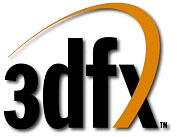Introduction
 3dfx
considers themselves to be the performance leader in the market. In fact, they
feel that they’ve always led the market and will continue to do so in the future.
Their Voodoo3 3500 offered the highest fillrate at the time of release, and
maintained its lead until the release of NVIDIA’s GeForce 256.
3dfx
considers themselves to be the performance leader in the market. In fact, they
feel that they’ve always led the market and will continue to do so in the future.
Their Voodoo3 3500 offered the highest fillrate at the time of release, and
maintained its lead until the release of NVIDIA’s GeForce 256.
But selling really expensive, high performance cards is not the best way to garner large market share or serious volume shipments. And volume means profit – the goal of any business and the only way to stay alive in the tough technology market. OEM’s are where the volume is at, and 3dfx’s merger with STB opened up a whole boatload of connections to OEM manufacturers with whom STB was very close. However, while it is nice to be the performance leader, OEM’s are driven by the price/performance ratio of a product. The Voodoo3 would be just fine for an OEM’s high-end system, but there’s even more volume on the low end. 3dfx’s answer?
On July 26, 1999, 3dfx quietly announced the Velocity line of cards, borrowing the name STB previously used for their top of the line NVIDIA products. In this press release, very little information was given out regarding the chipset used or performance potential, but there was a clear emphasis that the Velocity was for business users. There was speculation that this was perhaps a "cut-down" Voodoo3 or even a revival of the Banshee, but nothing was certain and 3dfx was not particularly interested in talking about the Velocity.
AnandTech recently received a Velocity 100 sample for evaluation – it’s time to dig in and find out what the real deal is with this card. Do we have a great card for business users and the casual gamer alike, or is this just a quick and dirty attempt by 3dfx to garner OEM market share by rebadging older technology?










1 Comments
View All Comments
KostNalu - Thursday, June 13, 2019 - link
It was my first 3dfx card back in the day. It was a good old days back then. I miss those Glide games.